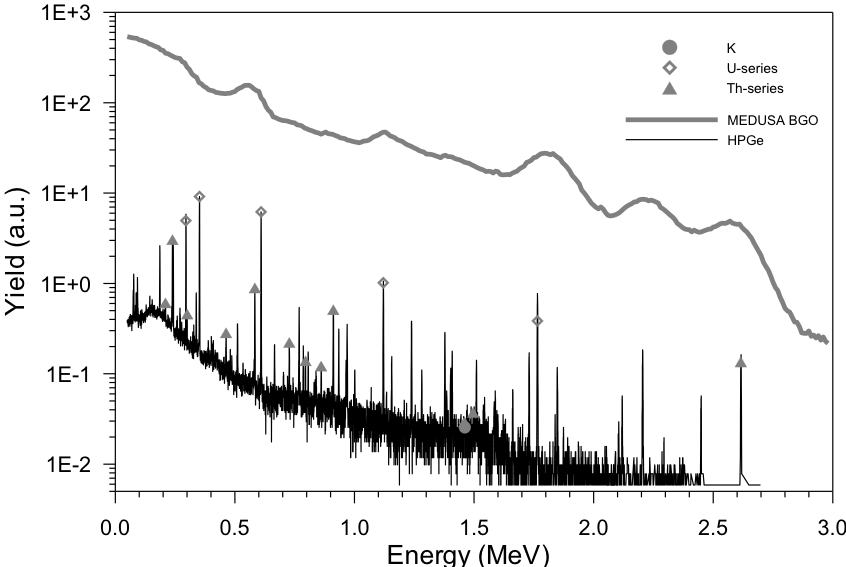Semi conductor detectors
A Hyper Pure Germanium (HPGe system) is tailored for measuring low activity samples. Therefore, the count rate from background sources (as building materials and cosmic rays) is reduced by a castle of “old lead” placed around the detector. Moreover, the geometry of the sample on the detector is often chosen to increase the efficiency of the system such that the sample covered the detector as much as possible (Marinelly beaker).
A typical example of a 𝛾-ray spectrum measured on the HPGe system is presented in the figure below. In this figure, the energies of the different radionuclides is represented by sharp photo peaks or lines that are superimposed on a Compton continuum. From the energy of the peaks and their content, the identification and the activity concentrations of the different radionuclides is determined. The HPGe system is normally calibrated regularly such that the energy of the photo-peaks and the detector efficiency are well known. For the analysis, the total number of counts present in the photo-peaks denoted in in the figure below are determined. Those numbers are corrected for background. By dividing this value by the branching ratio (that is the percentage of the decay of the nuclide that will proceed via the emission of a particular 𝛾-ray), the detectors’ efficiency and the measuring time, the activity of the specific nuclide is determined for each line. The activity concentration of the decay series is obtained as the weighted average of the activity concentrations acquired for individual 𝛾-rays.

The figure shows two gamma-ray spectra of zircon-sand normalised on time measured with a BGO scintillation system and on a HPGe semi-conductor detector. The peaks that are used in the analysis of the HPGe spectrum are indicated. It should be mentioned that the spectra were measured in a different geometry, this difference and the differences in response of the systems explain the large differences in yield for both systems.
